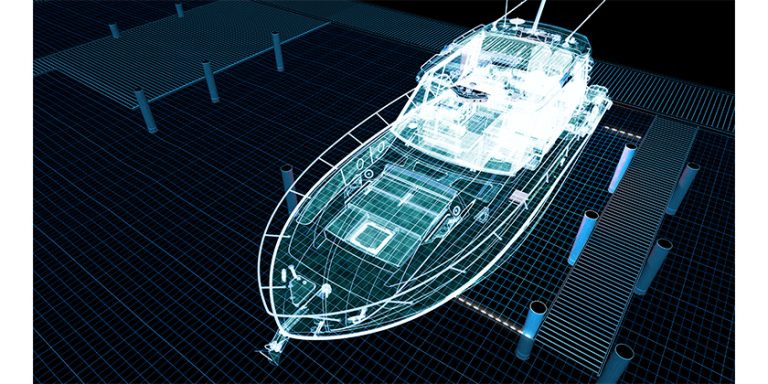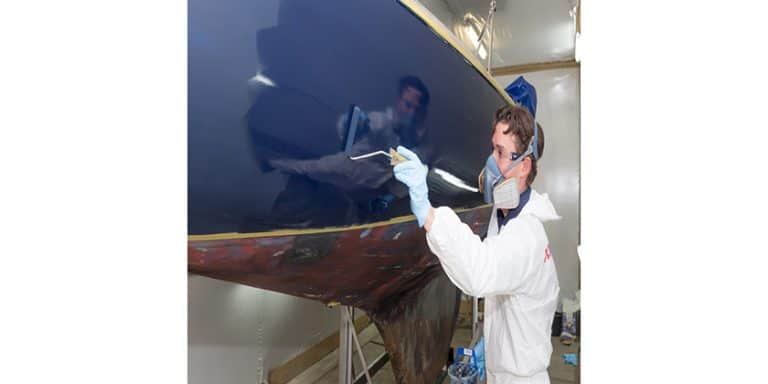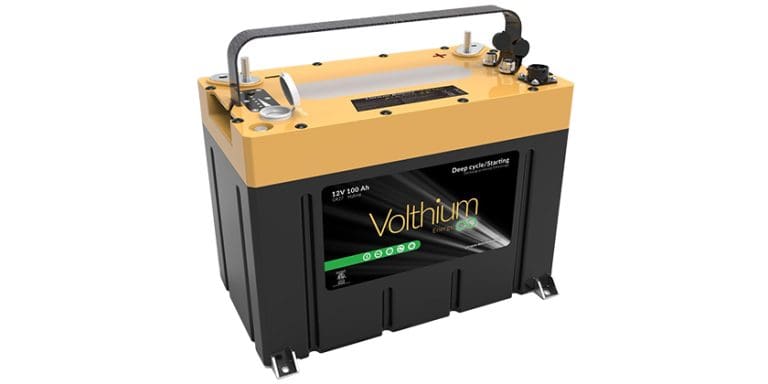Framing up the Glass Helm
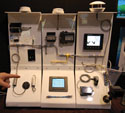
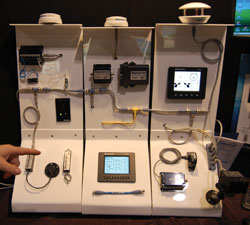 With this issue of Canadian Yachting, we are starting to “frame up” the glass helm from the perspective of an older boat that deserves better navigation and ancillary equipment.
With this issue of Canadian Yachting, we are starting to “frame up” the glass helm from the perspective of an older boat that deserves better navigation and ancillary equipment.
A prime example would have been the older classic, twin-engine cruiser that our group restored recently. Well over 100 lbs. of fatigued old wire with corroded connections and chaffed insulation was carefully disconnected, removed and replaced.
But there was an alternative. We could have upgraded to a NMEA 2000 system like the one Maretron offers. Are you familiar with how a NMEA 2000 network works?
Although the technology has been around now for a number of years, NMEA 2000 networks are still the hot new setup with more and more manufacturers adopting or including the technology within their product offerings. This would include Furuno, Garmin, Raymarine, Mercury, Yamaha, BRP, and Volvo to name a few.
We were supervised to learn (a little too late) that we could have saved perhaps half the cost of re-wiring our classic twin-engine cruiser if we had used a new NMEA 2000 network.
The reason is that instead of re-wiring by running dozens of new wires bundled and strung throughout the boat (often in awkward, hard-to-reach places), we could have used a NMEA 2000 cable system that requires just one line called the “trunk” (also referred to as the backbone) and what is called “drop line” topology. It is expensive equipment but it’s simple and easy to install (and to upgrade later as well). You never have to replace the cable to install new equipment, so simply adapt to it to suit the need.
The trunk or backbone cable includes five wires within a single waterproof cable: two signal wires, power and ground wires and a drain wire. The drain wire shields the signal, power and ground wires from external Radio Frequency Interference (RFI). It also helps to reduce RFI emissions from the cable. From the trunk line, a “drop tee” connector is used to take a line off to any piece of equipment.
At the nearest spot to the piece of equipment to be connected, the installer cuts into the trunk, installs two connectors and a drop tee. The tee let’s you take a drop line out to run the new piece of equipment. The NMEA 2000 cable system,with its one simple line, delivers both the power and the switching capability.
The key to how the network functions is in the “Parameter Group Numbers” or simply PGNs. The PGNs identifies the manufacturer, the product, and functions to deliver information on the network. Each manufacturer will determine the information to be sent or received to their devices based on these PGNs. An example would be the wind sensor from Maretron, the WSO 100. This will communicate PGN 130306 which is wind data. If you connect this to a display that has this PGN included in its software then it has the ability to display wind information, regardless of manufacturer.
Now let’s go back to the project of rewiring our classic twin-engine cabin cruiser. Had we realized it, we could have installed the NMEA 2000 trunk line and still used the original equipment onboard. We wanted to preserve the dashboard full of analog Stuart Warner instruments and the old carbureted engines with their conventional ignition systems, but we never dreamed they could be compatible with this new type of digital system. Older NMEA 0183 products can be adapted to the NMEA 2000 backbone, so you don’t have to replace that older GPS Chart Plotter right away.
In other words, with an NMEA 2000 trunk line, we can change out or install new pieces of equipment at any time. Connections can be made with pre-moulded cord sets or with field-attachable connectors. These connectors have five pins which correspond to the five wires we mentioned earlier: two signal wires, power and ground wires and the drain wire.
Maretron offers three NMEA 2000 certified basic cable options. The Mini cable system is commonly used for the trunk line on the network because its current carrying capacity is 8 amps. Mini cable has an outside diameter of approximately half an inch. The mid-size cable called Mid is commonly used for smaller networks is used either as the network trunk line or as a drop line. The Mid cable and connectors are rated to 4 amps and are 16ga. The Micro cable, typically used as the drop line for connecting devices to the main trunk line or for very small networks, is limited to 22ga wire. Micro cable has an outside diameter of just a quarter of an inch. Both the Mini and Mid cables meet ABYC regulations whereas the Micro does not. It is very important to use NMEA 2000 Certified cables as opposed to “Compliant or Works with NMEA 2000”. This will ensure trouble-free performance for years to come.
Another really interesting feature is that the trunk actually ends in what’s called the terminating resistor. It is very important to make sure two resistors are installed at each end of the network to stop reflection and having devices not work properly. Later, you can extend the trunk if you need to. Just install more connectors. That’s the beauty of NMEA 2000; you install the cable once and it is fully able to be expanded later.
To drop off the trunk line, you simply connect the new device using a “drop tee” connector. Note however that “daisy chaining” of devices is not possible because it’s a [safety] requirement to be able to remove a component from the network without affecting any other device.
This allows you to remove a device (for servicing, for example) while the rest of the network remains operational. On the other hand, Multiport boxes are available so instruments can be clustered (around the helm, for example). Incredibly, a Mini size half-inch trunk line can cover a length well over 200m and can handle up to a maximum of 50 physical devices and yet, the disconnection of any one of those devices won’t interrupt any other device on the network and they can all be switched individually.
Power is supplied in a conventional way from the boat’s 12 V battery or for big yachts, power could come from one or more isolated power supplies distributed along the network. Another amazingly simple aspect is that the whole system is grounded in only one location.
Once the trunk is installed, the power connected and the termination resistors and a single ground are in place, drop tees can be used to power such things as your navigation display screen on the helm, depth, speed and temperature transducers, your GPS systems and radar arrays and more. Tank level adapters are available to connect fuel or water gauges. You can also update your alarm system to include fire, smoke, heat, high water bilge and much more. You can get rudder angle indicators and the thing we didn’t realize when re-wiring our classic cruiser is that there is an engine monitoring box that converts the analog engine data into NMEA 2000 format and back, so we could have kept the old Stuart Warner instruments too. Plus, now data can be observed anywhere on the vessel that you want to install a NMEA 2000 compatible display.
This is great technology and in upcoming issues of Canadian Yachting we will look at the many devices and screens that you can install and monitor if you have upgraded to an NMEA 2000 network. Suddenly, that simple little phrase, “NMEA 2000 Certified” on the side of the box means you can upgrade equipment on a plug-and-play basis – this is pretty exciting stuff and, potentially, it’s your first step to setting up a glass helm on your boat.

